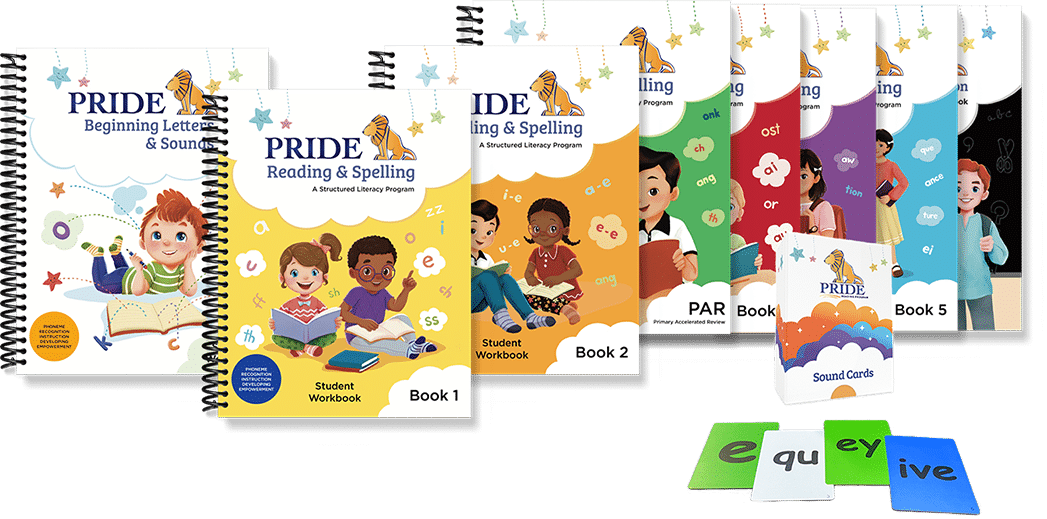As a very special treat, we have guest blogger Emily Gibbons from the Literacy Nest to share some really helpful and practical tips for teaching multisyllabic words to struggling readers. THANK YOU Emily, for writing such a great post for our PRIDE readers! So, here it goes…
“How do you help your students read and spell multisyllabic words effectively?”
We all know how critical it is to learn how to read and spell strategically for better accuracy, fluency, vocabulary development, and overall comprehension. Providing effective strategies for reading and spelling multisyllabic words gives students the foundation they need to become successful readers.
One reason many students get hung up on reading is that they get stumped on longer or harder words they can’t understand. Teaching them a process for working through multisyllabic words instead of offering ineffective techniques like guessing or looking at a picture, will empower them to read through text with ease.
Here are some tips for reading multisyllabic words effectively if they find themselves stuck. You will want to have some post-its or access to a small whiteboard.
- Have them locate and see if they can identify the vowel graphemes in the word by underlining them. (Vowel teams are one sound).
- Box any familiar suffixes.
- Circle familiar prefixes.
- Use knowledge of syllables to decode the vowel sounds.
- Say the whole word and see if it makes sense.
- Use a pencil to scoop under each syllable, blending left to right.
- Check the context for clarification. Does it make sense?
Practice these steps with your students. It will help them when they need to do it on their own. Again, you’re creating a foundation for a love of reading that they will use now and in the future. You’re showing them how to solve difficult problems and how to get past something that stumps them, such as a long, multisyllabic word they may not be familiar with.
Some of the most important things you will teach your students are how to read and how to spell. Getting familiar and comfortable with reading, spelling, and language are very important skills that students take with them for the rest of their lives. It can be intimidating, however, especially at first and when faced with big words that are new to them.
The biggest hurdle for children who struggle with reading is taking their decoding knowledge and applying it into encoding, or spelling knowledge. This can take a while to develop.
Implementing a multisensory approach which includes opportunities for seeing, hearing, spelling, writing and even touching multisyllabic words simultaneously helps to build those new neural pathways that struggling readers need to become strategic and efficient readers and spellers.
Watch our Free Webinar on “What is the Science of Reading?”
When teaching your students to spell longer words effectively, here are some tips:
- Repeat the word and give it in a sentence
- Make a line for each spoken syllable
- Pronounce each syllable one by one
- Segment the sounds in each syllable and write each one
- Check for sounds and rules
- Reread
Go over these steps with your student. Show them examples out loud with a couple of different words so that they can get very familiar with the process. This is what is going to help them when they are alone, facing a word they don’t know how to spell.
When they are taking a test, or writing for a grade, they need to be able to fall back on the steps without guidance, to figure it out for themselves.
This goes a step beyond just memorizing how to spell certain words and also teaches problem-solving skills when it comes to figuring out how to spell other words in the future.
Where there is a problem, there is a solution to fix it. You’re teaching the formula they will take with them for the rest of their lives.
Thank you to Emily from the Literacy Nest for sharing her great insight with our readers today!
We Have a Resource For You!
Looking for more information and activities on this topic? You might also enjoy reading my previous post on this topic:
Show me An Orton-Gillingham Lesson!
Please don’t leave without checking out the PRIDE Reading Program. The PRIDE Reading Program is an Orton-Gillingham curriculum that is used by teachers, tutors, and homeschooling parents worldwide with great success.



